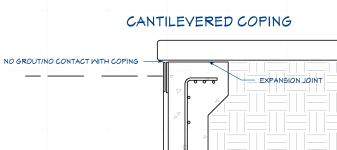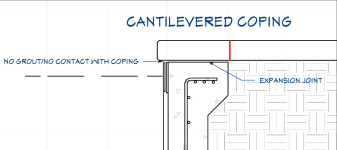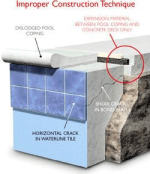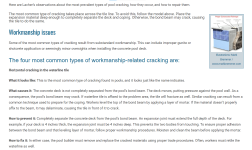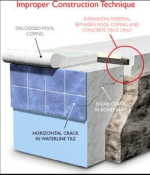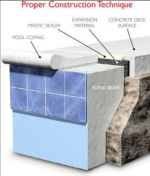Good morning,
So when the contractor poured (concrete) my pool, he poured the our deck pad on top of the pool wall instead of having the pool wall a solid piece all the way up. The problem is that where I live we get minor earthquake tremors and this has caused the pool to crack along the wall. Fortunately it's right at the 6" water tile grout line. So I have repaired it twice now by cutting out the existing grout and re-grouting it in the past year. It has done it again and I need to find a longer term solution. My question is, is there a product (caulk or something else) that would be flexible enough to support very minor shifting? The other options I have thought of would be to take the water tile completely off and put some type of vinyl liner on the wall or to take the tile off, chip out the concrete and put schluter membrane over it (then re-tile it) and this would provide enough flexibility with the tile over it that if it did crack it wouldn't leak again. Any help would be greatly appreciated. Thanks.
So when the contractor poured (concrete) my pool, he poured the our deck pad on top of the pool wall instead of having the pool wall a solid piece all the way up. The problem is that where I live we get minor earthquake tremors and this has caused the pool to crack along the wall. Fortunately it's right at the 6" water tile grout line. So I have repaired it twice now by cutting out the existing grout and re-grouting it in the past year. It has done it again and I need to find a longer term solution. My question is, is there a product (caulk or something else) that would be flexible enough to support very minor shifting? The other options I have thought of would be to take the water tile completely off and put some type of vinyl liner on the wall or to take the tile off, chip out the concrete and put schluter membrane over it (then re-tile it) and this would provide enough flexibility with the tile over it that if it did crack it wouldn't leak again. Any help would be greatly appreciated. Thanks.


